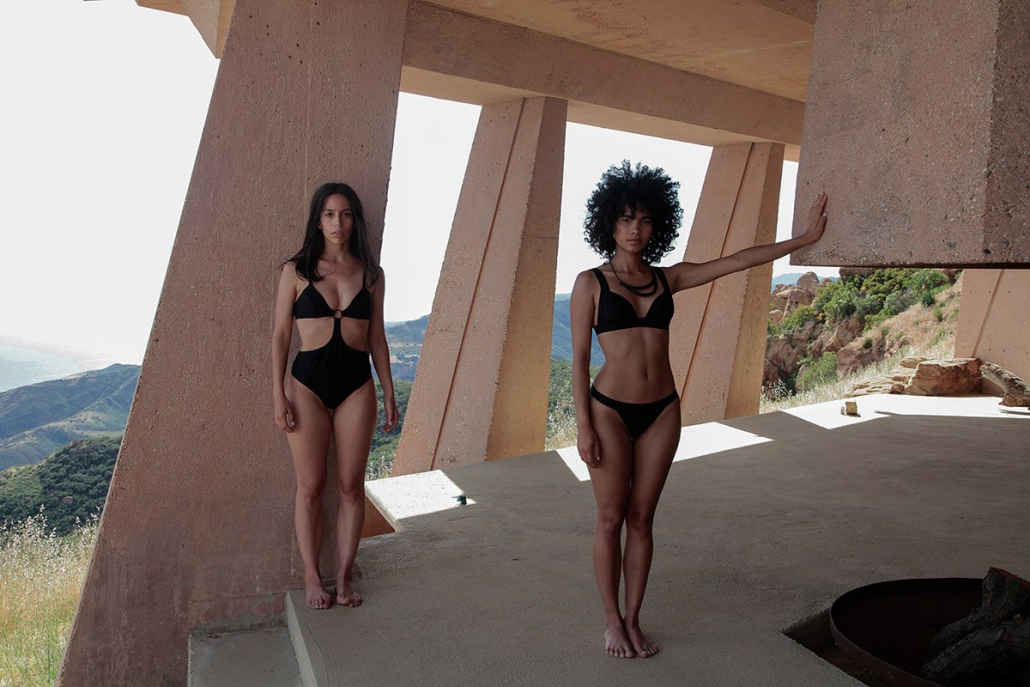This is an interview with Factory45’er Blakely Wickstrom about the launch of her brand Gala Maar, contemporary swimwear for the modern muse. Blakely took a pre-sales strategy to launch her first collection through her online store. Read on to learn more about her company and hear her advice for new brands.
Tell us about your products and company. What do you make?
Right now, I’m producing women’s swimwear and being as sustainable as possible throughout the entire process — from my fabric, made of discarded fishing nets, to sourcing the only made-in-the-USA pad inserts and everything else in between.
The construction is very high quality and the design is more timeless than trend driven, with the intent being that the swimsuits should last my customer an especially long time. Swimwear is the beginning — I’m hoping to expand the product range with every season to grow into an ethical resort lifestyle brand.

From the beginning, you had a very strong vision for your branding and aesthetic (hello, Instagram). Can you tell us a little bit about how you got so clear on the brand direction you wanted to take and the inspiration behind it?
Coming up with the aesthetic direction was probably the most fun and organic part of the process. For my Instagram, it started with just opening myself up to all the things that inspire me and saving the images to my Pinterest without giving it too much thought.
From there I was able to organize and hone in the branding and be more strategic about what I posted. In the swimwear market, there is not a lot of diversity in the type of imagery brands choose to use. Typically it involves a “perfect” woman on a tropical beach, which is fine but I wanted to do things differently and to portray the qualities of a contemporary woman beyond shallow attributes.
When creating my own campaign images I think the most important part was hiring a photographer who was a natural fit. I loved the way Amanda Bjorn captures her subjects and how comfortable and intimate her photographs are. When casting the models I picked three girls I found super inspiring, from a dancer/ choreographer to an artist. They were all unique beauties and gave their own je ne sais quoi to the project.
And then there was the stunning location of Frank Lloyd Wright’s grandson and apprentice, Eric Lloyd Wright, a compound high above Malibu which was a perfect mix of nature and architecture, my biggest inspirations aside from the female form.

You’re one of my Factory45’ers who was really conscious about being patient and taking your time with the process. You didn’t rush your launch – can you tell us more about your journey with the pre-production process?
In all honesty, it was more the process than my patience that didn’t rush the launch. Finding my fabric was the first step and what really set the course for my business. I did some googling and discovered that they had an office in NY so I made an appointment and met with the US sales rep. Swimwear is super technical and when your goal is quality and fit, finding the right manufacturing partner is essential.
I did encounter multiple situations where the quality or communication wasn’t working out and I had to move on. Going to trade shows was key, talking to as many people as possible and making the connections so there were options and a point of reference. Although frustrating at the time, I am thankful for the way things played out as it allowed me to really hone my product, message, and branding.
Throughout this time, did self-doubt ever creep up? How did you get past it?
Quite often! Something I remember very well from the Factory45 program was your advice to celebrate the small victories, which I think is key. That and being able to reflect and see how far you have come.
It’s easy to be overwhelmed and get caught up in all the things you have to figure out and the laundry list that only seems to grow so it really helps me to reflect on all the obstacles that I have overcome. Entrepreneurship is undoubtedly a rollercoaster of emotion so you just have to welcome it, roll with it and keep checking things off the list.
What has been the best thing about launching and seeing your idea come to fruition?
After working for others for so long it’s really great to be able to see an idea through from start to finish and the crazy amount of learning that goes into the process is very fulfilling. I feel like I am finally being able to live my truth and practice my ethics in a proactive way. Something unexpected which I have really loved is all the amazing and inspiring women that I have gotten to meet and work with as a result.

What is your best piece advice for a new designer or entrepreneur that’s just starting out down this road?
I would say be open to the course things take. The path won’t always go how you planned and it might be the best thing for you in the end. Also, check the mundane things off the list as soon as possible. Once your launch is on the horizon you will be happy to have things like your shipping and return policies, website copy and sales forms already in place.
To shop contemporary swimwear for the modern muse, visit Gala Maar here. To read more about Blakely’s experience in Factory45, read her alumni story here.































